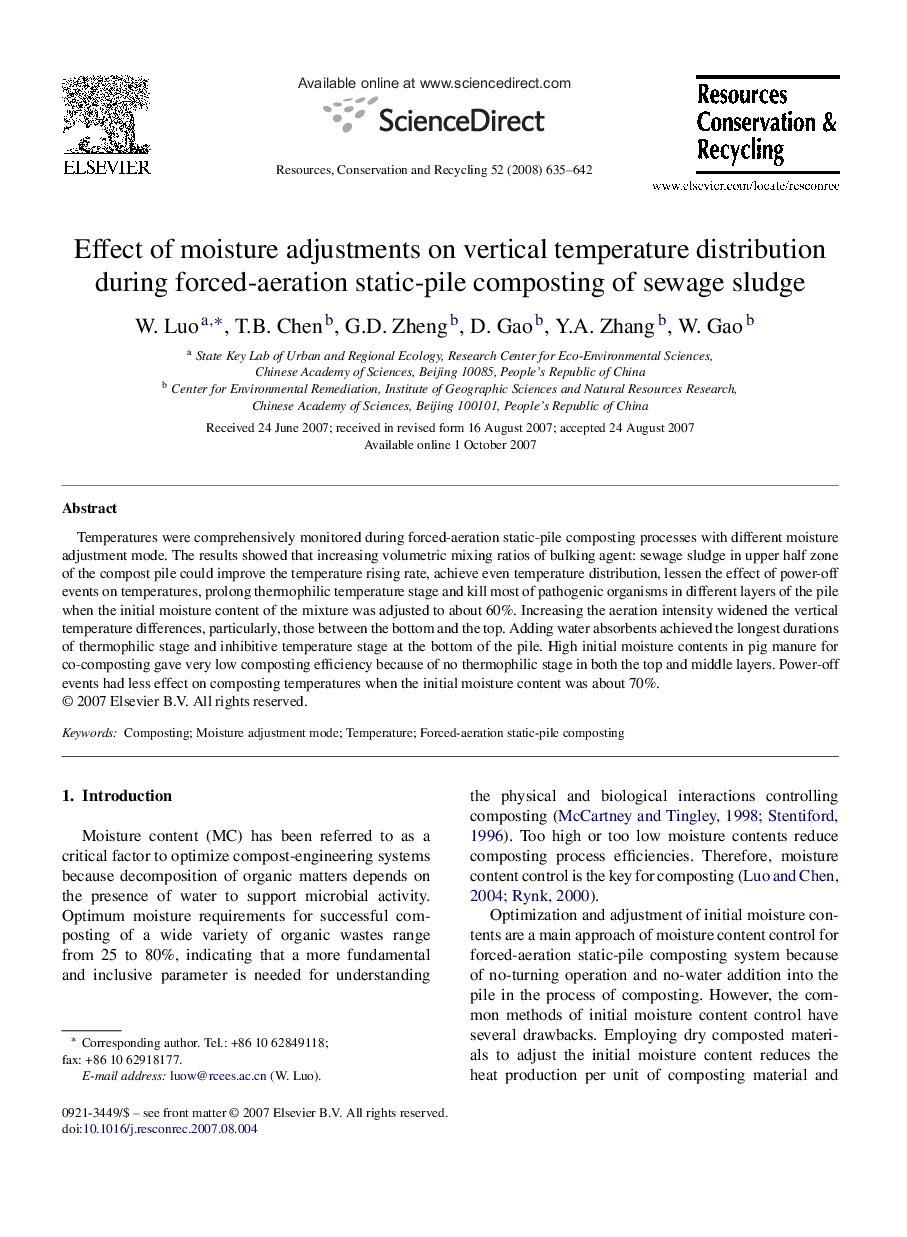| Article ID | Journal | Published Year | Pages | File Type |
|---|---|---|---|---|
| 1063767 | Resources, Conservation and Recycling | 2008 | 8 Pages |
Temperatures were comprehensively monitored during forced-aeration static-pile composting processes with different moisture adjustment mode. The results showed that increasing volumetric mixing ratios of bulking agent: sewage sludge in upper half zone of the compost pile could improve the temperature rising rate, achieve even temperature distribution, lessen the effect of power-off events on temperatures, prolong thermophilic temperature stage and kill most of pathogenic organisms in different layers of the pile when the initial moisture content of the mixture was adjusted to about 60%. Increasing the aeration intensity widened the vertical temperature differences, particularly, those between the bottom and the top. Adding water absorbents achieved the longest durations of thermophilic stage and inhibitive temperature stage at the bottom of the pile. High initial moisture contents in pig manure for co-composting gave very low composting efficiency because of no thermophilic stage in both the top and middle layers. Power-off events had less effect on composting temperatures when the initial moisture content was about 70%.
